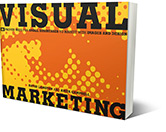The signed letter from the President introducing and endorsing the branding standards is the most important page in the book.
 A corporate identity manual defines how your company’s brand, image and messaging is delivered to the public and particularly to your key audiences. But before we answer that burning question, let’s dig a little deeper.
A corporate identity manual defines how your company’s brand, image and messaging is delivered to the public and particularly to your key audiences. But before we answer that burning question, let’s dig a little deeper.
Defining our terms
In their book, Brand Identity Essentials, authors Budelman, Kim and Wozniak define a Logo as, “a picture that represents the collection of experiences that form a perception in the mind of those who encounter an organization.” They describe an Identity as the logo plus the name, color, and music, as well as the applications where the logo appears.
Clive Chajet writing in Corporate Image makes these distinctions about Corporate Image and Corporate Identity. Corporate Image is what is perceived by its various audiences how it appears to outsiders such as the financial community or potential consumers. Whereas, Corporate Identity is what the corporation chooses to use to shape those perceptions.
According to designer Wally Olins, author of Corporate Identity: Making Business Strategy Visible Through Design, your identity must be visible, tangible and all-embracing. Olins says you affirm the identity through: Products, Services, People, Buildings and Communications materials.
Identity=Brand
Laurence Ackerman, a former partner at the legendary design firm, Anspach Grossman Portugal, says that besides comprehensive design standards, companies manage their identity through:
1. Language (specific words and phrases for services)
2. Distinctive themes and messages (“taglines”)
3. Actions and policies (CSR: Corporate Social Responsibility)
As a company grows and more people are involved, the very essence of the brand is being expressed by multiple managers and communicators. How do we reign in all of this and maintain standards, as well as build upon a brand as the company and its story evolves and grows?
The Corporate Identity manual is the critical tool in positioning a company, no matter how big or small. The importance of consistent typography, color use, logo placement and such cannot be taken for granted. Good identity manuals help designers and communication managers establish a visual voice for the company that may include photography libraries and image standards as well as professional publication templates. These guidelines build a more powerful corporate identity that in turn influences the public and ultimately the company’s corporate image.
The real power of your ID Manual
When I was the manager of corporate communications at an insurance company, I inherited a new logo and an unyielding binder full of identity standards and recommendations. (This was back in the days when you had to print everything and a PDF was not possible.) The “work in progress” standards were too cumbersome and the page length made it prohibitive to print. So I sat down and sifted through the content and prioritized everything to see how I could get the final manual down to 16 pages.
Once the Corporate Identity manual was published, life as the internal “logo cop” and defender-of-the-brand became easierbut not in the way that I had expected. I thought everyone would now follow the carefully worded rules and exacting details that we had labored over in writing and designing the manual. What I found was that most people didn’t actually read the document, they just called me with their questions and asked me what the rules were. So the manual became my reference guide, it kept me on track, consistent and more importantly it became the law of the land within the company. Once I had the manual in place I could call the Vice President of Pensions and say with confidence that the logo could not be published with that drop shadow against a dark colored background because it says so on page 4. And why would he listen to me? Because, on the first page of the Corporate Identity manual, there was a signed letter from the President introducing and endorsing the branding standards. That was the most important page in the book.
Back to Insights



